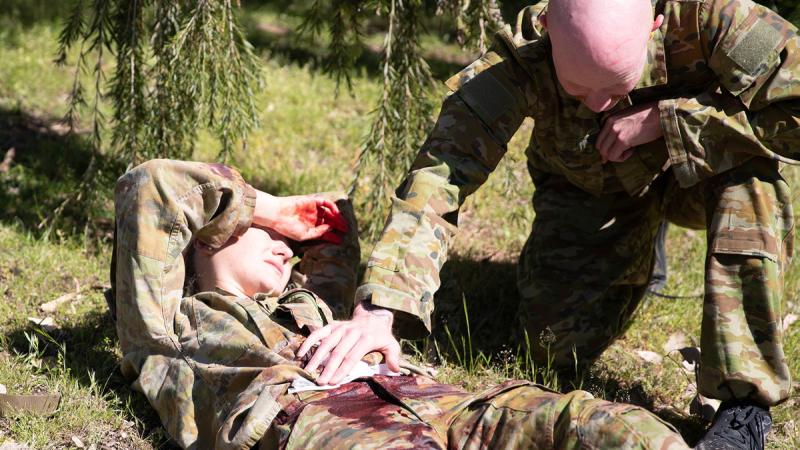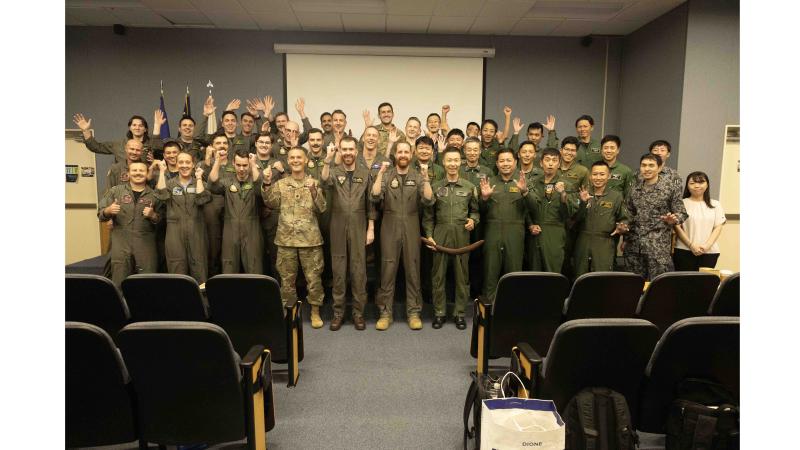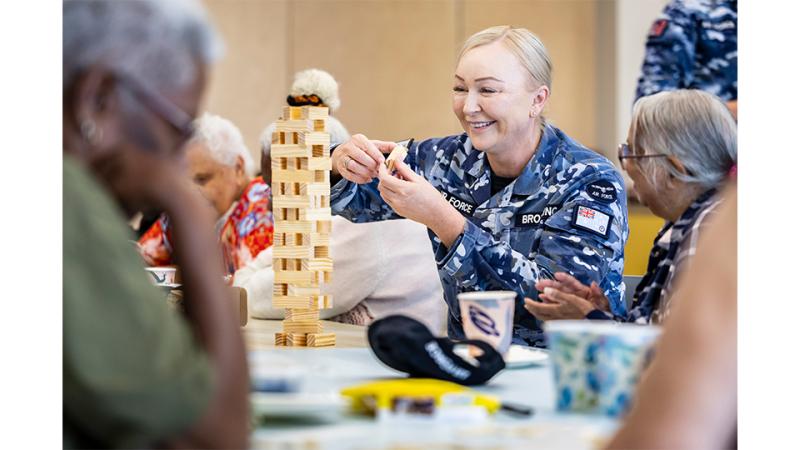15 May 2025
Of the five training establishments under Army Logistic Training Centre, none have embraced the Joint environment more than the ADF School of Health.
From its very name down to specific phases in culminating activities, the three services are ubiquitous, creating Defence medical professionals ready for any job, anywhere.
ADF School of Health Commanding Officer Lieutenant Colonel Jeremy Quade said the school was the largest training establishment to conduct initial employment training with health professionals.
Within that, the Joint Medic course is the longest, at 18 months to completion.
“They do a 12-month Diploma of Enrolled Nursing, then around six months or so of military contextualisation,” Lieutenant Colonel Quade said.
“That will involve not only understanding the military side of their roles, but also some of the physical aspects, taking them through obstacle courses and other activities to ensure that they understand the type of environment they'll be going into.
“They perform a very important role, both in wartime and peacetime, serving on operations and domestically. So I think we have a super important role, to keep our training fresh and relevant.”
With 150 Joint Medic trainees graduating annually, the military module of the course is carefully designed, fast paced and dotted with visiting experts.
Joint Medic Course Manager Sergeant Rachel Rook oversees the course, which covers primary health, trauma, medical emergency and advanced life support.
“By the time they finish the Diploma of Nursing, they're very excited to start the military module, as it's what they've envisioned being a medic in the Defence Force is,” Sergeant Rook said.
“We see a really big change when we start teaching them the trauma and medical emergency. There's a big mood shift and enthusiasm increases. Now with Joint Medic course 15 nearly at the end of their course, the team cohesion and the camaraderie has improved tenfold and they're very motivated to get out into the workforce.”
'There’s a lot of mental fortitude that’s required to get through this course.'
The culminating activity, Exercise Genesis Serpent, is a week-long assessment designed for real-life exposure across the three service domains, beginning with a Navy simulated ship in the Environmental Simulation Training Facility (ESTF).
With a Navy bay already inbuilt in the ESTF, partitions and equipment are brought in and trainees are given time to create a ward, holding area, advanced life support area and primary health area to what they believe will work best.
“We will guide and mentor the students in the most appropriate way to set up the medical facility to facilitate all the possible occasions that they may see in the Navy,” Sergeant Rook said.
During the RAAF component of Exercise Genesis Serpent, the trainees set up a simulated Role 2 facility with two resuscitation bays. Two critical patients trainees will be required to receive a handover, preparing for aeromedical evacuation for transport to higher care.
“We will have simulated passports and scenarios facilitated by RAAF members,” Sergeant Rook said.
“Once the casualties and all the trainees are loaded on to the simulated plane, the scenario will go for roughly two hours, and they will be expected to treat those patients while in flight, taking into consideration the altitude and all other environmental factors.”
The Army component is completed in the land domain, in much the same methodology as the other two services.
“We are a joint school here, and I believe it's beneficial for the students to be exposed to the Navy, to the Army, and the RAAF, so if the Navy need to integrate with Army, or if the Navy need to integrate with RAAF, they have that fundamental knowledge of what's required of them,” Sergeant Rook said.
Instructors at ADF School of Health were the top of their cohorts, with the posting extremely competitive.
Sergeant Rook said while she saw the trainees through the mental and emotional rollercoaster of Joint Medic, the result was extremely satisfying as an instructor.
“There’s a lot of mental fortitude that’s required to get through this course,” she said.
“To be able to march them off the parade at the end of their graduation and see the smiles on their faces is invaluable and so rewarding to be able to say, ‘Yeah, we did it’.”


